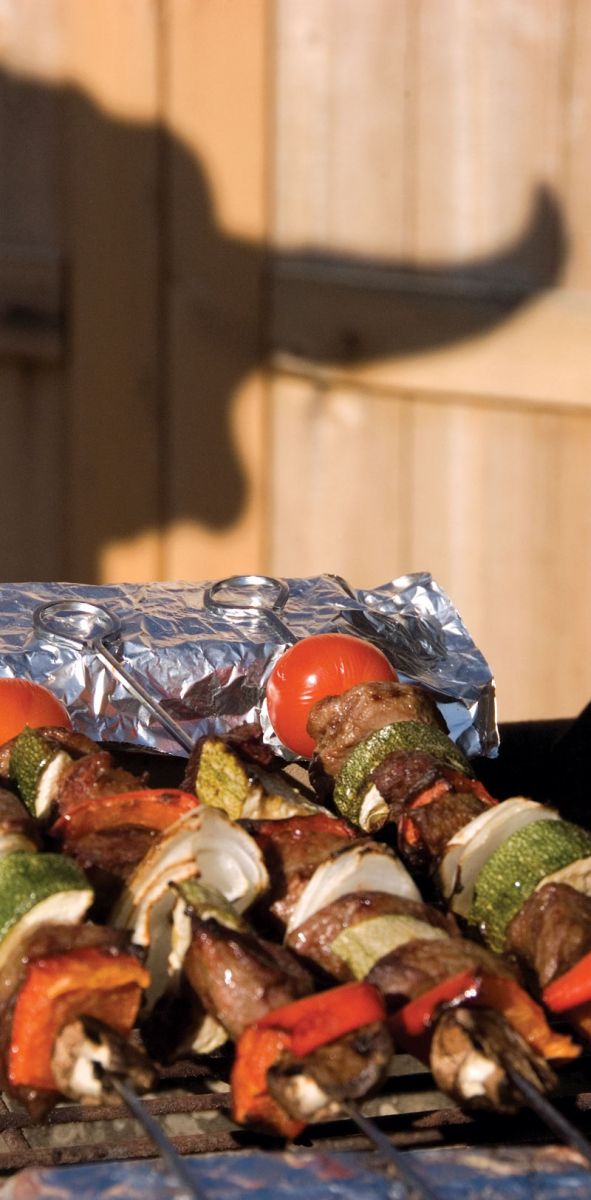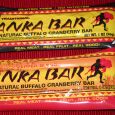The Gift of South Dakota
Subscriptions to South Dakota Magazine make great gifts!
Subscribe today — 1 year (6 issues) is just $29!
Buffalo: The Salmon of the Prairie
 |
| Dr. Kevin Weiland claims grass-fed bison contains more Omega-3 fatty acids, vitamin E and other nutrients than grain-fed meat. |
Kevin Weiland was just 16 when he saw the consequences of an unhealthy diet. He was helping his father with the family-run ambulance service in Madison when they were called to a nearby farm. In his book, The Dakota Diet: Health Secrets of the Great Plains, he recalls finding the farmer, “sitting in an enclosed combine with his fist clenched tightly to his chest as he struggled to breathe. His skin was pale and clammy, and his eyes had a blank stare of death. He was in his mid-fifties and extremely overweight and it took several of us to get him on a stretcher and into the back of the ambulance.” An autopsy showed he had died of a heart attack and suffered from diabetes and high blood pressure.
Weiland went on to become an internal medical physician. While he treats many health problems at the Rapid City Medical Center, including diabetes and heart disease, a large part of his practice centers on preventative medicine. Weiland developed the Dakota Diet to encourage people to eat healthy foods and prevent disease. His book includes a food plan, sample menus and, of course, the requisite chapter on exercise. (You didn’t think you’d get away with loafing on the couch, did you?)
The foods Weiland recommends are based on many of the Mediterranean Diet’s guidelines: plenty of fruits and vegetables, healthy fats, small portions of nuts and fish on a regular basis. What makes his diet unique is the many food choices produced on the Dakota plains — including grass-fed buffalo.
“Buffalo is the salmon of the prairie,” Weiland says. “It has fewer calories than grain-fed meat, and contains more Omega-3 fatty acids, vitamin E and other nutrients. A buffalo steak may have 100 fewer calories than a steak from a grain-fed steer. You could lose up to 10 pounds a year just by switching your main source of meat to grass-fed buffalo.”
Can ranchers produce an equally healthy food by grass feeding their cattle? “Yes, absolutely,” Weiland says. “Meat from grass-fed cattle is a great source of protein, a nutrient dense food. All the nutrients get depleted in a feedlot.”
Plains Indians thrived for centuries on a buffalo-centered diet similar to Weiland’s. After being confined on reservations and forced to subsist on commodities like white flour, sugar and lard, the Indians developed the while man’s diseases of obesity, diabetes and heart disease.
With Weiland’s help, Beau LeBeau, an obese and diabetic Lakota man from Pine Ridge, began the Dakota Diet in February of 2007. South Dakota filmmakers Sam Hurst and Larry Pourier recorded his first 200 days on the diet for a documentary, Good Meat: How the Lakota got Fat and Beau LeBeau Changed His Life.
Buffalo is more than food for LeBeau. He told the Rapid City Journal, "The buffalo is considered sacred by our tribe, of course, but before this, I didn’t bring it into my daily life. Now I do. There’s always been a spiritual connection for me, but now there’s even a better connection to it.”
LeBeau went from 333 pounds to 269 pounds after 100 days on Weiland’s diet and exercise plan, and he had significant improvement in the sleep apnea that awakened him as many as 33 times an hour. Blood studies for diabetes and liver function also improved.
Weiland sees the impact of his diet with other patients as well. “We’re getting people off medications for treatment of their diabetes, some of which cause heart disease,” he says. “With nutrient-dense low-calorie foods, their insulin resistance gets better and their blood sugars improve.”
Weiland’s campaign to improve South Dakotans’ health through better diet and exercise still has a long way to go. He offers the following statistics: in 1987 less than 10 percent of South Dakotans were considered obese. By 1995 the numbers reached 14 percent, and in 2001 they jumped again to 15-19 percent. In 2011, a sobering 28 percent of South Dakotans were considered obese.
We need to think about nutrition as a way of life,” Weiland says. “Don’t just diet — live it.”
A number of South Dakota ranchers are now raising grass-fed bison, including Sioux Falls talk show host Rick Knobe. He and his son, Brian, have raised grass-fed buffalo at their Lazy RRse Buffalo Ranch since 2000. Lazy RRse buffalo receive no hormones and they graze natural prairie grasses.
Knobe has interviewed Weiland on his radio show, and found him to be extremely knowledgeable. “A lot of docs say, ‘Don’t eat red meat, don’t eat red meat.’ But Weiland says it’s OK if you do it this way.” Knobe believes the long-term benefits of grass feeding could eventually change the livestock industry. “So many people feed grain now, it’s going to take a long, long time to change that,” he says. In the short term, it’s more likely that small farmers and buffalo ranchers will continue the grass-fed trend.
“If you take a slice of buffalo meat and compare the grain-fed to the grass-fed,” Knobe says, “Grass fed is clearly leaner.” Because the grass-fed lacks marbling, it has a tendency to cook rapidly so he offers this advice to customers: “Just remember, cook it low (as in temperature) and slow.”
Bison Kebabs
From The Dakota Diet by Dr. Kevin Weiland
1 lb. buffalo sirloin
2 medium zucchini or yellow squash
1 large red bell pepper
1 large onion, quartered
8 mushrooms
8 cherry tomatoes
Marinade
1/2 cup low-sodium soy sauce
1/2 cup canola oil
1 cup dry white wine
2 cloves garlic, minced
Mix the marinade. Cut the sirloin into 1 1/2 inch cubes and marinate in the refrigerator for 12-24 hours. Cut squash and bell pepper into 1/2 inch pieces. Skewer the meat and vegetables as desired and grill over medium-hot coals for 8-10 minutes, brushing with marinade occasionally. Serves 4.
Editor’s Note: This story is revised from the January/February 2008 issue of South Dakota Magazine. To order a copy or to subscribe, call 800-456-5117.










Comments